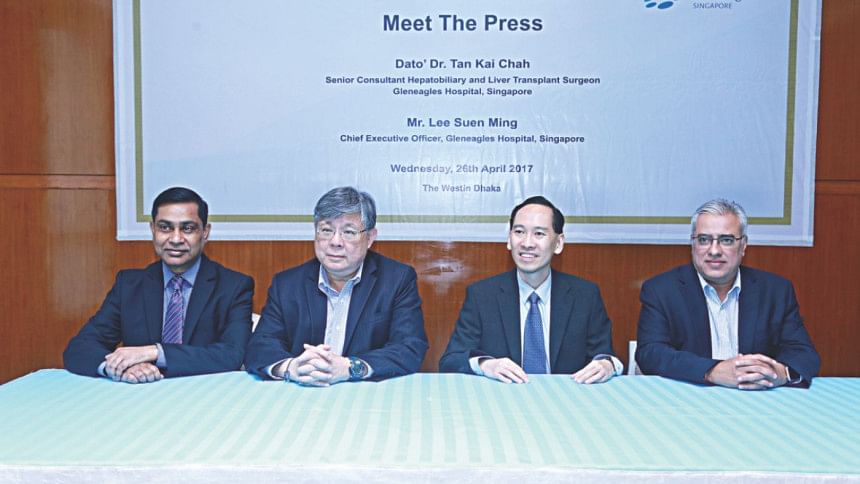Insights on liver transplant

A liver transplant is an operation to remove a diseased or damaged liver and replace it with a healthy one. It is usually recommended when the liver has been damaged to the point that it cannot perform its normal functions. This is known as liver failure. The only hope for the long-term survival of a person with liver failure is a liver transplant because – unlike the kidney, heart or lungs – there is no device (such as a dialysis machine) that can permanently replicate the functions of the liver.
The Star Health recently interviewed renowned liver surgeon specialising in liver transplants Dr. Tan Kai Chah from the Asian American Liver Centre at the Gleneagles Hospital, Singapore. Dr Tan is a pioneer in various liver transplant procedures including the first ever 'split-liver' transplant. He shared his insights regarding the various aspects of liver transplant.
When he was asked about how to take measures against liver damage, Dr Tan emphasised on the importance of having a healthy dietary habit. Regular and adequate physical exercise is one key measure that can keep the liver healthy. Obesity is one of the major causes that damage the liver. Due to the sedentary lifestyle, inadequate physical exercise, unhealthy diet and fast food consumption, people are getting not only obese but morbidly obese these days. At least 30% of the total population in South Asia now has fatty liver. It is a condition that is becoming more common day by day. It is going to be the number one cause of liver damage in the coming days surpassing hepatitis.
When a patient comes to Dr Tan with a fatty liver, He suggests a liver function test. If the test indicates of higher enzyme levels, it indicates that there is ongoing liver damage. This is a condition that is known as steatohepatitis which means that the fatty liver has progressed into liver damage. The patient is then suggested to avoid oily food, reduce extra weight, perform physical exercise regularly, control diabetes and prescribed some medication. After all these measures taken, if the patient follow up reveals reduction in the liver enzymes, it indicates that the ongoing damage of the liver has stopped and it is unlikely to cause liver cirrhosis from there.
Dr. Tan emphasised on the need of liver donation as it is extremely hard to find a living donor for a liver transplant. The risks of the donor undergoing surgical procedure for donating the liver for transplant can easily be avoided. There is not much of a difference between living donor liver transplant (LDLT) or a cadaveric (from a dead body) liver transplant because the result is almost similar in a good liver transplant centre. In fact, a cadaveric liver transplant is preferable than LDLT because it is easier to perform the surgery as there is less emotional stress involved for the donor, no risks involved for a donor who needs to undergo surgical procedure and a cadaveric liver is easier to transplant as the structures are bigger and well defined so it is easier to perform the transplant.
The writer is a reporter of Star Health.
E-mail: [email protected]

 For all latest news, follow The Daily Star's Google News channel.
For all latest news, follow The Daily Star's Google News channel. 



Comments